#National Museum of Art Architecture and Design
Text
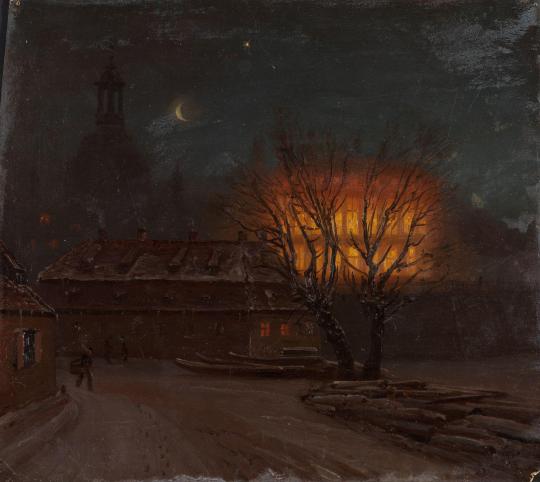
Winter Evening in Dresden, Knud Baade, 1845
#art#art history#Knud Baade#cityscape#Dresden#Germany#winter#winter scene#evening scene#chiaroscuro#Norwegian art#Scandinavian art#19th century art#oil on paper#National Museum of Art Architecture and Design
1K notes
·
View notes
Text
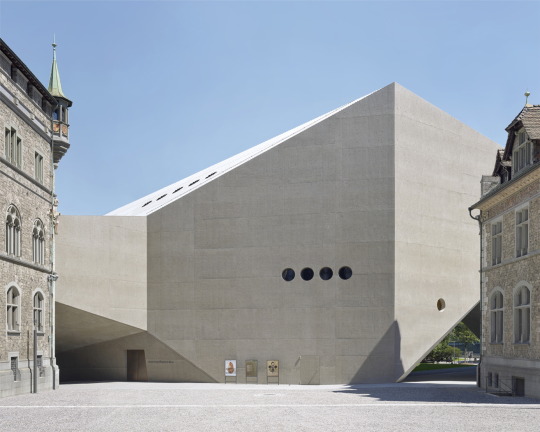
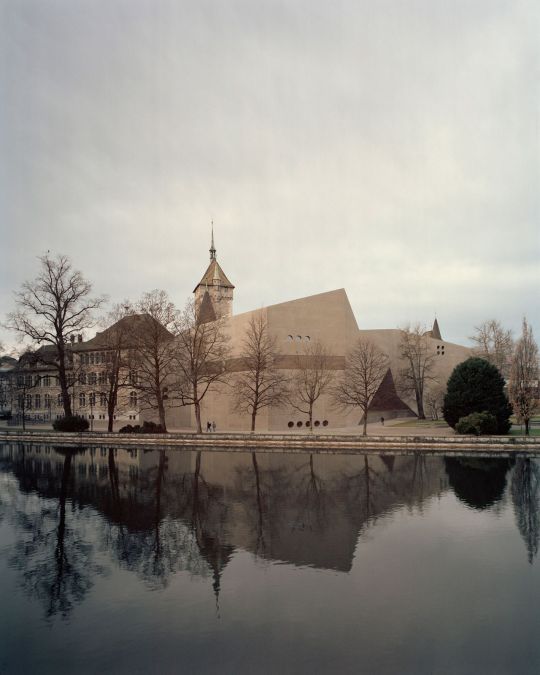
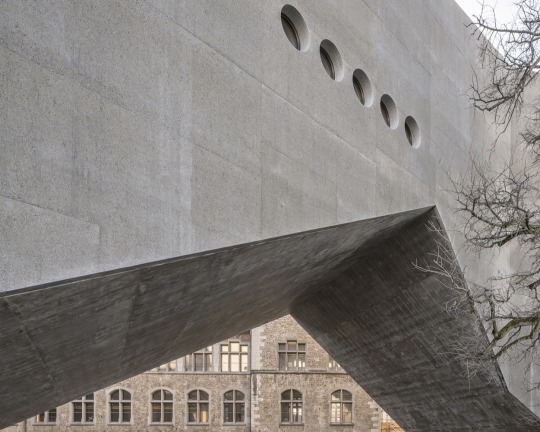
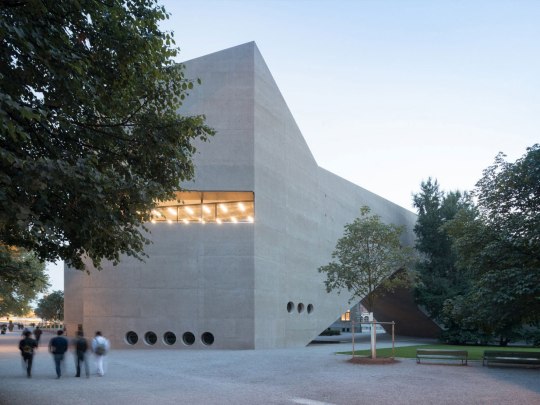
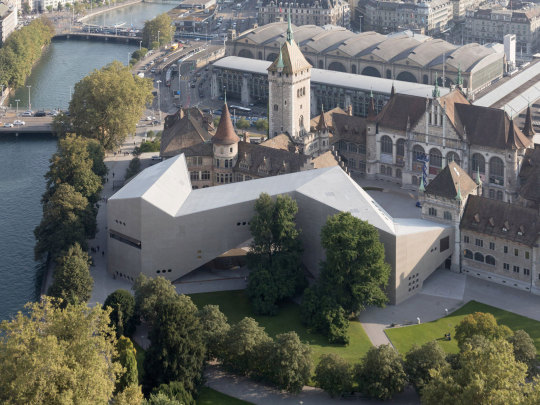
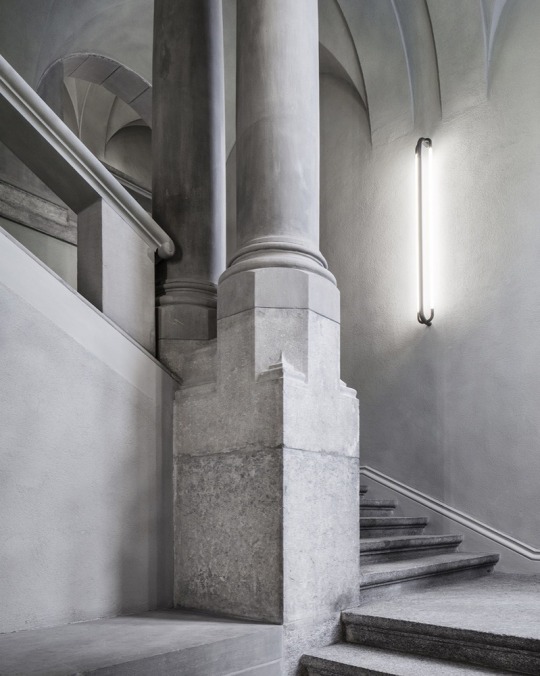

Swiss National Museum, Zurich - Christ & Gantenbein
#Christ & Gantenbein#architecture#design#building#modern architecture#interiors#minimal#concrete#museum#national museum#cultural center#art#history#old and new#extension#brutalist#porthole window#angular#zurich#switzerland
269 notes
·
View notes
Photo

National Ethnology Museum, Osaka, Japan, 1977,
Kisho Kurokawa
#art#design#Architecture#osaka#japan#kisho kurokawa#museum#stairway#stairwell#staircase#stairsdesign#Staircases#geometry#stairs#national ethnology museum
250 notes
·
View notes
Text
youtube
Journey to Korea’s Ancient Silla Kingdom, October 5, 2022
What can we learn by visiting the sites of ancient civilizations? Is it possible to recreate the architecture of the past today? Reflect on these questions as you travel to Korea in this online program inspired by the current exhibition Once Upon a Roof: Vanished Korean Architecture. The journey takes you from the galleries of the National Museum of Asian Art to the ancient city of Gyeongju in southeastern Korea. Once the capital of the ancient Silla kingdom that lasted one thousand years (57 BCE–935 CE), the city is a well-known tourist destination rich with history and culture. Yoon Sangdeok, an expert in art and archaeology, leads this tour through temples and royal tombs that have endured to this day and through treasures discovered in and around the city in order to understand the surviving legacy of the ancient kingdom. Visit the royal garden built for crown princes of the Silla kingdom, where more than thirty-three thousand artifacts were unearthed in 1975, including the ornamented roof tiles featured in the exhibition Once Upon a Roof, currently on view at the museum. This tour will give you a chance to imagine the ancient city as it was more than one thousand years ago.
Yoon Sangdeok is senior curator and the head of the Exhibition Division at the National Museum of Korea. A specialist in Silla archaeology, Yoon conducted excavations of Silla remains and organized exhibitions on related subjects while he worked at the Gyeongju National Museum for five years beginning in 2007. He also served as a Korean co-organizer for the Metropolitan Museum of Art’s exhibition Silla: Korea’s Golden Kingdom in 2013.
Keith Wilson is curator of ancient Chinese art at the National Museum of Asian Art. Also interested in Korean art, Wilson organized Sacred Dedication: A Korean Buddhist Masterpiece in 2019 and the digital catalogue Goryeo Buddhist Paintings: A Closer Look, dedicated to the sixteen examples of such paintings in US museum collections.(https://publications.asia.si.edu/publications/goryeo/en/default.php)
Sunwoo Hwang joined the National Museum of Asian Art in 2018 as Korean program associate and is responsible for coordinating Korean programs, including exhibitions, public programs, and scholarly events.
Smithsonian's National Museum of Asian Art
#Once Upon A Roof: Vanished Korean Architecture#architecture#exhibition#Smithsonian#National Museum of Asian Art#Buddhism#history#Korean#art#art history#Gyeongju#Silla#Three Kingdoms of Korea#archaeology#design#Korea#Unified Silla#Gyeongju National Museum#National Museum of Korea#religion#cultural amalgam#7th century#9th century#ceramic
0 notes
Text

Jan Bartek - AncientPages.com - New scientific research has revealed a piece of tartan found in a peat bog in Glen Affric around forty years ago can be dated to circa 1500-1600 AD, making it the oldest known surviving specimen of true tartan in Scotland.
The Scottish Tartans Authority commissioned Dye Analysis and Radiocarbon testing on the woolen textile to prove its age.
Scotland's Oldest Tartan On Display For The First Time!
Glen Affric tartan - Scotland's oldest-known true tartan discovered by The Scottish Tartans Authority to go on display for the first time at V&A Dundee's Tartan exhibition.
Credit: Alan Richardson Pix-AR
The first investigation was dye analysis carried out by analytical scientists from National Museums Scotland. Using high-resolution digital microscopy, four colors were visually identified for dye analysis: green, brown, and possibly red and yellow.
The dye analysis confirmed the use of indigo/woad in the green but was inconclusive for the other colors, probably due to the dyestuff degradation state. However, no artificial or semi-synthetic dyestuffs were involved in making the tartan, which pointed to a date of pre-1750s.
Further clarification on the age of the tartan involved radiocarbon testing at the SUERC Radiocarbon Laboratory in East Kilbride. The process involved washing out all the peat staining, which would have otherwise contaminated the carbon content of the textile.
The Radiocarbon testing results identified a broad date range between 1500 and 1655 AD, with the period between 1500 and 1600 AD the most probable. This makes it the oldest-known piece of true tartan found in Scotland – the Falkirk ‘tartan,’ dating from the early third century AD, is actually a simpler check pattern woven using undyed yarns.
The Glen Affric tartan, which measures around 55cm by 43cm, is now on display for the first time at V&A Dundee’s Tartan exhibition.
by TaboolaSponsored Links
The piece will be the oldest exhibit among more than 300 objects. The exhibition examines tartan’s universal and enduring appeal through iconic and everyday examples of fashion, architecture, graphic and product design, photography, furniture, glass and ceramics, film, performance, and art.
“The testing process has taken nearly six months, but the effort was well worth it, and we are thrilled with the results!
In Scotland, surviving examples of old textiles are rare as the soil is not conducive to their survival. As the piece was buried in peat, meaning it had no exposure to air and was therefore preserved.
The tartan has several colors with multiple stripes of different sizes, and so it corresponds to what people would think of as a true tartan.
“Although we can theorize about the Glen Affric tartan, it’s important that we don’t construct history around it. Although Clan Chisholm controlled that area, we cannot attribute the tartan to them as we don’t know who owned it.
“The potential presence of red, a color that Gaels considered a status symbol, is interesting because of the more rustic nature of the cloth. This piece is not something you would associate with a king or someone of high status; it is more likely to be an outdoor working garment," Peter MacDonald, Head of Research and Collections at The Scottish Tartans Authorit said.
Scotland's Oldest Tartan On Display For The First Time!
New scientific research has revealed a piece of tartan found in a peat bog in Glen Affric, Scotland around forty years ago can be dated to circa 1500-1600 AD, making it the oldest known surviving specimen of true tartan in Scotland. Credit: Credit: Alan Richardson Pix-AR
“The Glen Affric tartan is clearly a piece of national and historical significance. It is likely to date to the reign of James V, Mary Queen of Scots, or James VI/I. “There is no other known surviving piece of tartan from this period of this age. It's a remarkable discovery and deserves national attention and preservation. “It also deserves to be seen and we’re delighted that it is to be included in the Tartan exhibition at V&A Dundee,” John McLeish, Chair of The Scottish Tartans Authority, said.
“We knew The Scottish Tartans Authority had a tremendous archive of material and we initially approached them to ask if they knew of any examples of 'proto-tartans' that could be loaned to the exhibition.
I'm delighted the exhibition has encouraged further exploration into this plaid portion and very thankful for The Scottish Tartans Authority's backing and support in uncovering such a historic find.
To be able to exhibit the Glen Affric tartan is immensely important in understanding the textile traditions from which modern tartan derives, and I'm sure visitors will appreciate seeing this on public display for the very first time," James Wylie, curator at V&A Dundee said.
Tartan at V&A Dundee opens on Saturday, 1 April, until 14 January 2024.
Written by Jan Bartek - AncientPages.com Staff Writer
Source: Facebook
Source: AncientPages.com
236 notes
·
View notes
Text
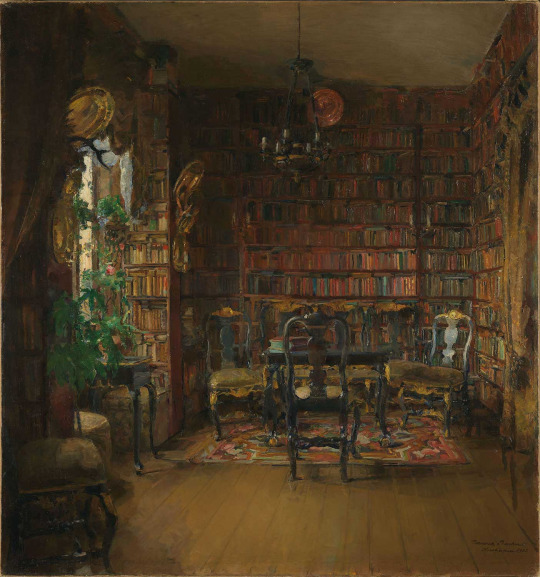
Harriet Backer (Norwegian, 1845–1932) • The Library of Thorvald Boeck • 1902 • National Museum of Art, Architecture and Design, Oslo
#art#fine art#painting#art history#harriet backer#woman artist#norwegian artist#artwork#paintings of interiors#paintings of public interiors#impressionism#early 20th century#early 20th century scandinavian art#the painted room art blog#art blogs on tumblr#art lovers on tumblr
114 notes
·
View notes
Text

Harald Sohlberg, Street in Røros in Winter, 1903, oil on canvas
The National Museum of Art, Architecture and Design, Norway
279 notes
·
View notes
Text

1577-1584 Hans Knieper - Frederik II
(National Museum of Art, Architecture and Design, Oslo)
73 notes
·
View notes
Text
on western artistic chauvinism and islam.
As an American non-Muslim, i first learned about Islamic art and architecture in an academic context, when i was studying art history in college. one of the first things we studied was the complex geometric forms in islamic architecture. Some of the most striking, complex, and beautiful patterns in contemporary and historical islamic architecture are present in religious architecture.
Examples:
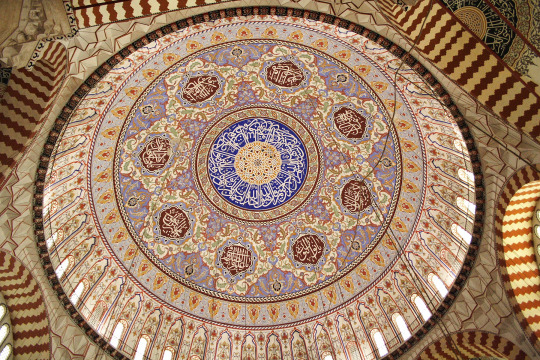
Dome of the Selimiye mosque, Turkey, completed 1574 CE.
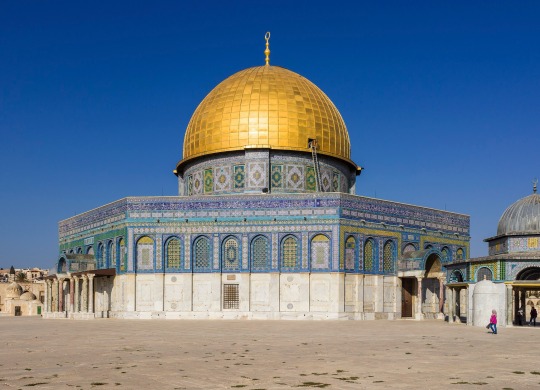

Exterior of the Dome of the Rock, a shrine withing the Al-Aqsa Mosque, Jerusalem, Palestine. Original construction was completed between 688 and 692 CE, and many alterations and repairs have been undertaken subsequently.
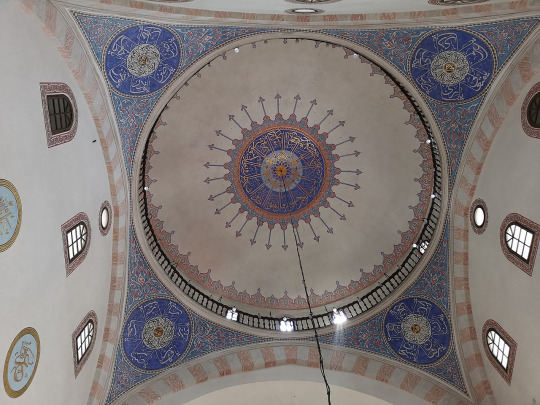
Dome of the Gazi Husri-beg Mosque, Sarajevo, Bosnia and Herzegovina, constructed 1531 CE. (Fun fact: In 1898 this mosque became the first known mosque in the world to have electrical lighting installed!)
The origins of these incredibly complex patterns partly stem from the avoidance of art depicting living beings according to religious principles, also known as aniconism, which is not universal throughout Islamic historical art, but gradually became nearly universal, especially in religious art an architecture. However, there are historical examples of secular figural art made by Muslims. (Link to an article on Islamic figural art by the Met Museum.) The Arab world in general maintained in-depth studies of mathematics and geometry throughout what we may call the "medieval" era in Europe. Arabic translations of Aristotle were studied. Al-Khwarizmi invented Algebra in 830 CE.
So, as any good artist knows, within a "limitation," artistic techniques can become more specialized and refined. Indeed, Muslim artists as far back as the Ummayad caliphate had extemely sophisticated application of geometry within their designs.
In art class I studied some of the fundamentals of how to construct similar geometrically repeating patters. I grasped the fundamentals quickly, and I found it enjoyable to work within these structures. However, as you increase the complexity, the degree to which you need to understand geometry to get your patterns to work out seemingly increases exponentially.
If you want a step-by step study of some of these geometric patterns, please check out the tutorials of the Lebanese artist Joumana Medlej. She also has tutorials on figure drawing and Arabic calligraphy.
(Speaking of calligraphy, I wanted to add more to this piece regarding calligraphy and architecture, but I feel I'm getting really long already.)
Years later, after I was finished with school, I got the opportunity to go to the Balkans. While I was in Bosnia & Herzegovina, I visited several historical mosques and got to see in person the type of art that I had previously only seen in photographs.
But what does it mean to acknowledge that this art exists?
Well, the mere acknowledgement and knowledge of the history of Islamic art, architecture, calligraphy, indeed, all the elements of distinct cultural heritage across the world, are controversial in the West.
One of the darkest examples of European violence against Muslim peoples was the Bosnian Genocide in the 1990s. This genocide did not start or end with the infamous massacre of ~8000 Bosniak Muslim men and boys by the Army of Republika Srpska (VRS) at Srebrenica, but also included systematic relocation of civilians, smaller massacres, and destruction of cultural heritage throughout Bosnia by both VRS and the Croatian Defense Council (HVO). Over one thousand mosques were destroyed. The VRS and the HVO both deliberately attempted to create "ethnically pure" Muslim-free statelets, and destroyed all the mosques in the territory that they held. The VRS burned down Sarajevo's National Library. The HVO blew up the Old Bridge of Mostar, a beautiful stone bridge in the middle of the city that had stood since the 16th century. (After the war, the stones were recovered from the river below and the bridge was reconstructed, and is used by Mostar residents every day.)
Israel refuses to acknowledge the historical and contemporary fact of the existence of a Palestinian people. As of February 2024, Israel has destroyed over one thousand mosques in the course of its bombardment of Gaza.
Many state and non-state actors within the U.S. and its allies also harbor these dark ideas of "bombing Muslims into the Stone Age." The invasion of Iraq was referred to as a "crusade" by President George W. Bush, and this attitude was aped by the Christian right wing in the USA.
All "they" see is a mythical horde from the East that must be destroyed.
But there is no horde. The people you share this earth with are your neighbors, regardless of their religion.
We live in a global society, and art anywhere is part of global cultural heritage. The acknowledgement, preservation, and study of Islamic art and architecture does not only culturally enrich Muslims, it enriches the whole world. Conversely, when you destroy Islamic art and architecture to harm Muslims, you also harm the rest of the world.
63 notes
·
View notes
Text
The Rothko works on paper exhibit opens this week at the National Gallery in Washington DC. This is a huge exhibit of paintings on paper, most of which have never been seen in public.
It runs from November 19, 2023 – March 31, 2024 and then moves to The National Museum of Art, Architecture and Design, Norway, May 16–September 22, 2024
See it if you can, I'll be there at the DC version
#mark rothko#markrothko#rothko#daily rothko#dailyrothko#abstract expressionism#modern art#abstraction#colorfield#ab ex#colorfield painting#mid century
119 notes
·
View notes
Text
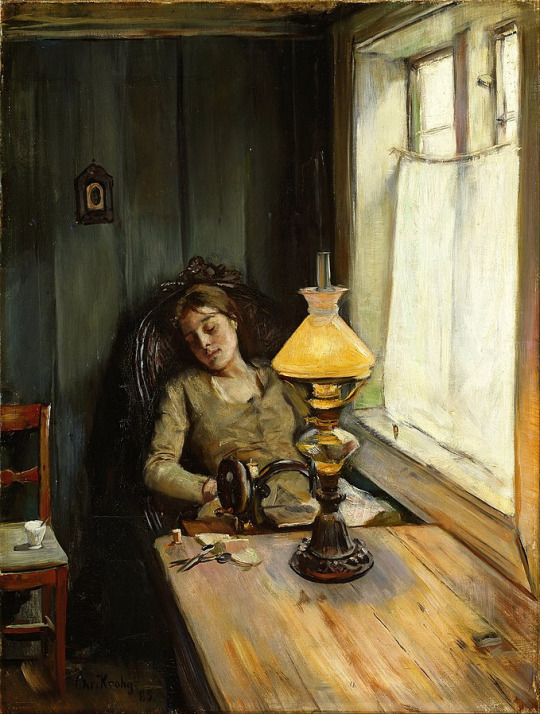
Christian Krohg (1852-1925)
"Trett" ("Tired") (1885)
Oil on canvas
Realism
Located in the National Museum of Art, Architecture and Design, Vestbanehallen, Oslo, Norway
#paintings#art#artwork#genre painting#genre scene#christian krohg#oil on canvas#fine art#realism movement#museum#art gallery#norwegian artist#portrait of a woman#female portrait#interior#clothing#clothes#tired#sleepy#sleeping#asleep#1880s#late 1800s#late 19th century
177 notes
·
View notes
Text

The Night, Peter Nicolai Arbo, 1887
#art#art history#Peter Nicolai Arbo#allegory#allegorical art#personification#genre painting#Norwegian art#Scandinavian art#19th century art#oil on canvas#National Museum of Art Architecture and Design
1K notes
·
View notes
Text







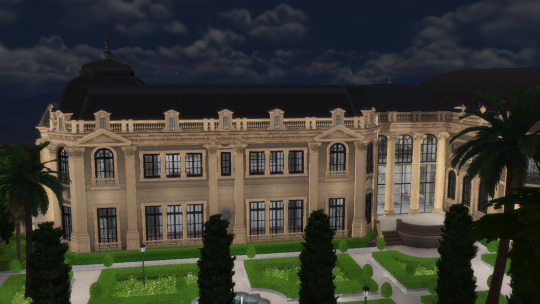

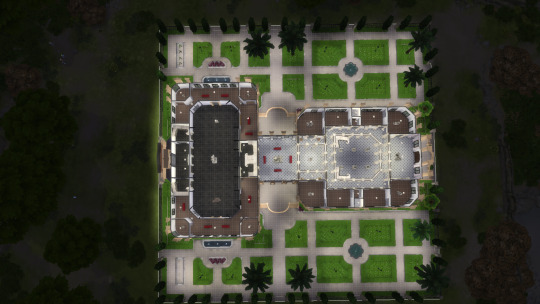
Chile National Museum of Fine Arts
Hello guys!
I leave this here. This is the chilean Museum of Fine Arts.
Some history:
The Palace of the Fine Arts (el Palacio de Bellas Artes), dates to 1910 and commemorates the first centennial of the Independence of Chile. It was designed by the Chilean architect Emile Jéquier in a full-blown Beaux-arts style and is situated in the Parque Forestal of Santiago.
The Palacio de Bellas Artes, the current home of the Museum, is in the Neoclassical Second Empire style and the Baroque Revival style, strongly reinforced with Art Nouveau details and touches of metallic structural architecture. The central entrance is through a gigantically enlarged version of Borromini's false-perspective window reveals from Palazzo Barberini, which encloses a pedimented doorway entirely surrounded by glass, a Beaux-Arts touch. Through a broken pediment the squared cupola rises to the top. The internal layout and the facade are both modelled after the Petit Palais of Paris. The glass cupola that crowns the central hall was designed and manufactured in Belgium and brought to Chile in 1907. The approximate weight of the armour of the museum is 115,000 kg, of the glass of the cupola, 2,400 kg.
Architectonically, the floorplan of the museum is one of a central axis marked by the entrance and a grand hall with a staircase to the second floor. In the grand hall, above a balcony from the second floor, there is a carving in high relief which depicts two angels supporting a shield. They are located in the semi-vault above the heads of two Caryatids that arise from the balcony, carved by Antonio Coll y Pi.
------------------------------------------------------------------------------------------
You will need a 64x64 lot and the usual CC that I use.
I took some liberties because I laked the resources to make it identical to the original.
IMPORTANT - you will need to change the usage because I allready had a family living in the lot and did not want to evict them.
I will be sharing the same building with a parliament configuration and a home configuration, so you can chose the one that fits your game :)
Please let me know if you like it and tag me if you share my buildings in your stories that I really enjoy!
Have a great day!
DOWLOAD: https://www.patreon.com/posts/86664913?pr=true
(early access: 7/28/2023)
#sims 4 architecture#sims 4 build#sims4#sims4palace#sims 4 screenshots#sims4play#sims 4 historical#sims4building#sims4frencharchitecture#sims 4 royalty#ts4 screenshots#ts4 build#ts4cc#ts4 download#ts4#sims 4#the sims 4#ts4 gameplay
54 notes
·
View notes
Text
The Norwegian Fjord Horse




1. Johannes kirke på Christiania Torv, Oslo, sett fra Kontraskjæret. Croppet versjon (1904) a photograph by Anders Beer Wilse (1865–1949) from the Oslo Museum collection.
2. A Farm at Lysaker (1892) by Jacob Gløersen (1852–1912). Oil on canvas. From the Norwegian National Museum of Art, Architecture and Design.
3. Salvage Depot at Vaterland by Hans Ødegaard (1876–1943). Oil on canvas. From the Norwegian National Museum of Art, Architecture and Design.
4. Study of a horse (1844) by Adolph Tidemand (1814–1876). oil and fiberboard on paper. From the Norwegian National Museum of Art, Architecture and Design.
(Picture source for Johannes kirke på Christiania Torv, Oslo, sett fra Kontraskjæret. Croppet versjon, A Farm at Lysaker, Salvage Depot at Vaterland, and Study of a horse)
#the second and third image i found categorized as depictions of Fjordings#the other two are included because of their country of origin and the fact the depict horses that clearly look like Fjordings#Anders Beer Wilse#Jacob Gløersen#Hans Ødegaard#Adolph Tidemand#art#horses#art history#horse#horse art#Fjordings#Fjording#Norwegian fjord horse#norwegian fjord#old photography#horses in art history#horse breeds
70 notes
·
View notes
Text

Forest Troll, 1906
Theodor Kittleson (1857-1914)
Pen, pencil, watercolour, and gouache on paper
National Museum of Art, Architecture and Design, Oslo
10 notes
·
View notes
Text
Freetime Posters - 12 Arts & Crafts Hobby Posters

Happy weekend y'all! It's time for the third set of hobby posters! I wanted to have these done yesterday, but I got a little carried away with these. 😅 This week's hobby is arts and crafts, and I think I could have made 120 designs for just this theme. Swatch, info and download beneath the cut!
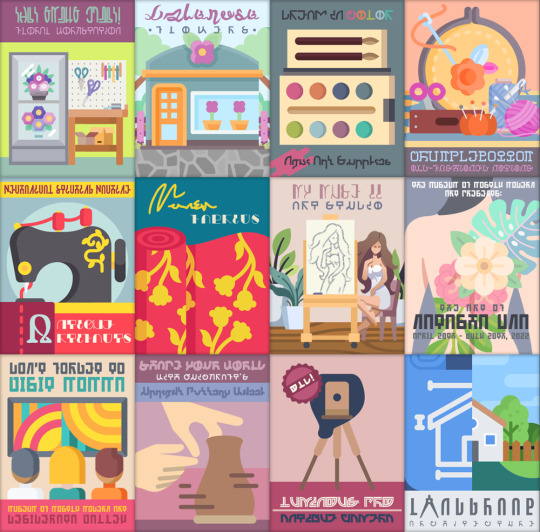
These are, of course, on @linacheries’ stylish 4t2 conversion of Simsza’s National Park Prints (mesh is included), and they feature another 12 designs made with Flaticon elements + lots of Simlish fonts. They’re all inspired by locations, items and Sims from the game.
Translations:
That Smells Great! Floral Workstation Advertisement for the in-game item. This took forever but I'm really pleased that it matches the actual game workstation so well.
Delarosa Flowers Inspired by Florence Delarosa, Bluewater Village florist
Top: Dream in Color Bottom: Ngai Art Supplies Inspired by Trevor Ngai, arts and crafts instructor
Crumplebottom Old-Fashioned Notions I couldn't resist a Crumplebottom reference, or a Crumplebottom pun XD
Top: Mechanical Stitching Machine Bottom: Antique Artifacts Advertisement for the in-game item
Monif Fabrics Inspired by Cassidy Monif, arts and crafts instructor
My Muse II Art Studio For the arts and crafts secret lot. I ended up reusing Aphrodite from the mythology paintings I shared awhile ago. I don't like reusing icons unless it's fairly inconspicuous, but I just couldn't find anything else that worked for this. I ended up frankenstein-ing some legs onto her, and I kind of like the idea that this was a study for the Aphrodite painting. Or something. XP
Top: The Museum of Mostly Modern Art Presents: Bottom: The Art of Natasha Una April 20th - July 20th, 2022 Inspired by Natasha Una, Desiderata Valley arts and crafts enthusiast
Top: Don't Forget to Visit MOMMA Bottom: Museum of Mostly Modern Art Desiderata Valley Another bad pun, please forgive my cornball sense of humor :P
Shape Your World with QuicKraft's Upright Pottery Wheel Advertisement for the in-game item
Luminous Pro Antique Camera (and the badge reads Old! because I'm also a smartass XP)
Landgraab Architecture Inspired by the Landgraab Dynasty, of course!
A numbered swatch is included in the download.
Icons are by Freepik, max.icons, ultimatearm, Smashicons, popo2021, Arkinasi, Aranagraphics, surang, iconixar, Nikita Golubev, and samlakodad. As always, much gratitude to these talented designers for sharing their amazing work! <3
Okay! Three down, seven to go! 😂
DOWNLOAD (SFS) Recolors are ~350KB
Lots of love,
Spacey
UPDATE: Now that this series is complete, here is a master list of all the posts, plus a single download link for all the posters. All swatches are included, and files are sorted into folders so you can easily keep just what you like:
Tinkering
Nature
Arts & Crafts
Fitness
Science
Cuisine
Sports
Games
Music & Dance
Film & Literature
DOWNLOAD ALL THE POSTERS (SFS) Recolors are ~8.5MB
You can now also get all the designs on BV's Travel Keeper!
#s2cc#ts2cc#ts2 download#sims 2 download#ts2 custom content#sims 2 custom content#s2 cc#ts2#ts2 art#ts2 posters#ts2 wall decorations
274 notes
·
View notes